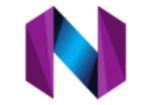Vendor Management System for Staffing Agencies: A Comprehensive Guide
In today’s dynamic business landscape, staffing agencies play a pivotal role in bridging the gap between talent and organizations. To effectively manage the complexities of this industry, a robust Vendor Management System (VMS) has become indispensable. A VMS streamlines processes, enhances efficiency, and improves overall performance for both staffing agencies and their USA JOBS clients. This comprehensive guide will explore into the intricacies of VMS, exploring its benefits, key features, implementation strategies, and addressing frequently asked questions.
Understanding Vendor Management Systems (VMS)
A VMS is a software platform designed to manage the contingent workforce. For staffing agencies, it serves as a centralized hub for managing multiple clients, tracking candidate placements, generating invoices, and ensuring compliance. By automating various tasks, VMS empowers staffing firms to focus on core competencies while optimizing resource allocation.

Benefits of a Vendor Management System for Staffing Agencies
- Enhanced Efficiency: Automating routine tasks such as job posting, candidate sourcing, and invoicing saves time and reduces errors.
- Improved Visibility: A centralized platform provides Corp to corp real-time insights into workforce data, enabling better decision-making and performance tracking.
- Cost Reduction: Streamlined processes and reduced manual intervention lead to cost savings.
- Risk Mitigation: VMS helps ensure compliance with labor regulations and reduces the risk of non-compliance penalties.
- Improved Client Satisfaction: Efficient service delivery and timely communication enhance client satisfaction.
- Data-Driven Decision Making: Comprehensive data analytics empowers staffing agencies to identify trends, optimize performance, and make informed business decisions.
Key Features of a VMS for Staffing Agencies
- Job Management: Efficiently manage job requisitions, track Corp to corp jobs and fulltime status, and distribute opportunities to relevant vendors.
- Candidate Management: Create candidate profiles, track placements, and manage candidate lifecycle.
- Vendor Management: Onboard and manage multiple vendors with Vendor Management System for Staffing Agencies, track performance metrics, and facilitate communication.
- Time and Attendance: Track employee hours, generate timesheets, and ensure accurate payroll processing.
- Invoicing and Payments: Automate invoice generation, track payments, and manage billing disputes.
- Reporting and Analytics: Generate comprehensive reports on key performance indicators (KPIs), identify trends, and measure ROI.
- Compliance Management: Ensure adherence to labor regulations and maintain compliance records.
- Integration Capabilities: Seamlessly integrate with other HR systems and tools for efficient data exchange.
Implementing a VMS: A Step-by-Step Guide
- Needs Assessment: Identify specific business requirements and Newhire challenges to determine the ideal VMS features.
- Vendor Selection: Evaluate different VMS providers based on functionalities, pricing, and customer support.
- Data Migration: Transfer existing data into the VMS system accurately and efficiently.
- User Training: Provide comprehensive training to staff members to maximize system utilization.
- Testing and Optimization: Conduct thorough testing to identify and address any issues.
- Go-Live and Adoption: Launch the Vendor Management System for Staffing Agencies and encourage user adoption through effective communication and support.
- Continuous Improvement: Monitor system performance, gather feedback, and implement enhancements.

Overcoming Challenges in VMS Implementation
- Resistance to Change: Address employee concerns through effective communication and training.
- Data Quality: Ensure data accuracy and consistency for optimal VMS performance.
- Integration Complexity: Plan and execute integrations carefully to avoid disruptions.
- Vendor Selection: Conduct thorough research and evaluation to choose the right VMS provider.
FAQs about VMS for Staffing Agencies
What is the ROI of implementing a VMS?
The ROI of a Vendor Management System for Staffing Agencies can vary depending on the agency’s size and complexity. However, benefits include increased efficiency, reduced costs, improved data accuracy, and enhanced client satisfaction.
How long does it take to implement a VMS?
Implementation time depends on the system’s complexity, data migration, and user training. Typically, it can range from a few weeks to several months.
Can a VMS help with compliance?
Yes, VMS can help with compliance by automating tasks, tracking employee data, and generating reports required by labor regulations.
What are the essential features of a VMS for staffing agencies?
Essential features include C2C jobs management, candidate management, vendor management, time and attendance, invoicing, reporting, and compliance management.
How can a VMS improve client satisfaction?
By streamlining processes, providing better visibility into workforce data, and enhancing communication, a VMS can improve client satisfaction.
Conclusion
A Vendor Management System is a powerful tool for staffing agencies to streamline operations, enhance efficiency, and drive growth. By carefully selecting and implementing a VMS, staffing firms can gain a competitive edge in the industry. By addressing the key benefits, features, and challenges, this guide provides valuable insights for staffing agencies seeking to leverage VMS technology to its full potential.
